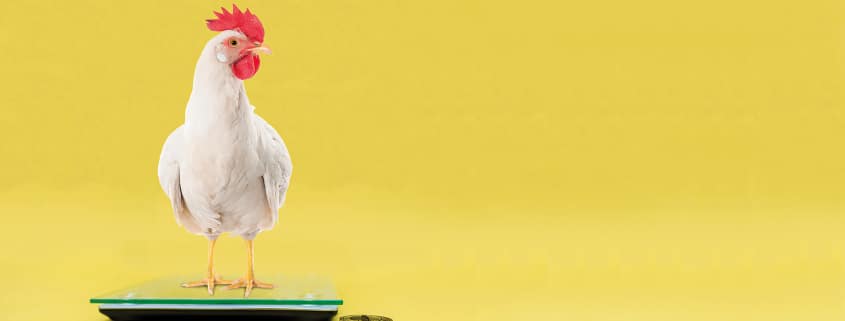Frequent monitoring reveals poultry resilience indicator
Frequent measurements of body weight revealed a poultry resilience indicator. Body weight measurements have long played an important role in laying hen production. Research shows that if measured frequently, the resulting data can provide new insights into how breeding and feeding management can be further optimized in laying hens. This may also stimulate new methods for evaluating feed additives in commercial diets.
Published in International Poultry Production by Gwendolyn Jones, April 2021
Several disciplines in animal production, including genetics, veterinary sciences and nutrition are currently striving to find ways of positively influencing resilience in farm animals. There are two reasons for that: On the one hand developments such as reduction in the use of antibiotics, climate change and a shortage in farm labour are increasing the need for resilient animals. On the other hand, continuous breeding for improved animal performance has been shown to reduce the resilience of farm animals.
Resilience affects the animal’s response to changes in its production status (e.g. start of lay or peak lay) as well as challenges in its environment and diet. However, our ability to influence and improve resilience in farm animals depends on knowing how to measure it in the field. Advances in sensor technologies and automated weighing systems are enabling more frequent monitoring of birds increasing the quantity of parameters measured and data collected in poultry production systems. This is helping to gain new insights into the wellbeing of birds and make better decisions in real time on farms.
Body weight management
Body weight is one of the most important parameters to track in layer flocks. Breeding companies say this is true not just during the rearing period but also once the bird starts laying and throughout its life. Reaching the target body weight during rearing is key to production performance in the laying period. Whereas regularly monitoring body weight throughout the laying period provides insights into how well the environment is supporting the optimal productivity of the bird.
The sooner body weight deviations are detected the quicker adjustment can be made, which means the more frequent the measurements are made the better to prevent any long-term damage. Breeding companies recommend a minimum of weekly measurements of body weights in laying hens from day old to 26 weeks of wage, every two weeks from 26 to 35 weeks of age and every 4 weeks beyond 35 weeks of age.
Technological advancements in collecting data
New technologies and digitalization are paving the way for more frequent and precise monitoring of key parameters in birds for productivity and wellbeing. Increasing the frequency of weighing and sample size will lead to more precise prediction of live weight in flocks. New sensor-scales can feed live, accurate weight recordings into analytics platforms, which helps to recognize any variation in growth rates to act on.
Computer vision technology is another area that is promising to facilitate frequent monitoring of birds in the field and has been applied to automation of house management, behaviour, disease detection and weight measurement. Computer vision uses computational models to gain high-level understanding from digital images or videos. It has been proposed that camera-based weighing systems may have the potential of weighing a wider variety of birds, in a flock that would avoid a platform weigher.
These new technologies can provide information on what is happening in real time compared to what should happen. So, if there are deviations from where things should be, it is a simple way of showing the farmer that he needs to act.
Poultry resilience indicator in laying hens – how to measure
Some of the economic value in improving resilience in farm animals is based on reduced labour and health costs on farms. Once we know how to measure resilience effectively in birds in the field, we can start managing for it. Researchers from the University of Wageningen are proposing natural logarithm-transformed variance (ln(variance)) of deviations in body weights measured over time as a reliable resilience indicator in laying hens.
More resilient animals are expected to show fewer and smaller deviations compared to less resilient animals, because they are less influenced by disturbances. Figure 1 illustrates the difference in ln(variance) in body weights of laying hens; a more horizontal standardized body weight line over time indicates a lower ln(variance) and thus a greater resilience. The key to gaining these insights on bird resilience are regular body weight measurements as frequently as possible throughout the life of laying hens.
Best results for improved resilience in birds are likely to be achieved via a combination of breeding, nutrition and other management strategies. While we may only be at the beginning of being able to manage for poultry resilience, progress will certainly be accelerated as and when new monitoring technologies coming to the market are adopted on farms more widely. However, in research trials these technologies and new parameters may already be used to evaluate not only genetic progress but also responses to new nutritional strategies in birds.
Illustrating the poultry resilience indicator
Figure 1 Example to illustrate differences in ln(variance) of body weight in laying hens. A more horizontal standardized body weight line over time indicates a lower ln(variance) and thus a greater (hypothesized) resilience. (adapted from Berghof et al 2019)




